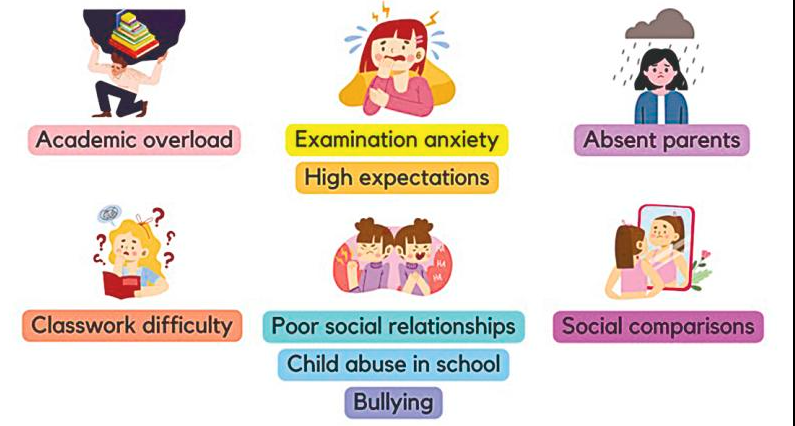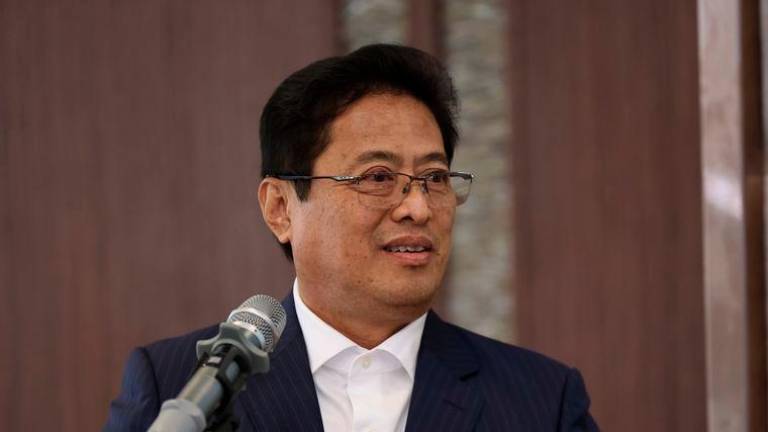SINGAPORE is ranked second in the world in mathematics, science and reading while Malaysia is ranked 48th, 48th, and 57th, respectively.
Despite one time being together under the umbrella of the federation, the contrast between Singapore’s and Malaysia’s education standards could not be more striking as the former surged and leapt forward since its separation in 1965.
This is a wake-up call for Malaysia to examine the fundamentals of its education system and how it could produce high-quality students and citizens.
Besides academic performance, personal development should also be one of the end goals of schooling.
This is because children are at the peak of information absorption at such young ages, not just from books, but from their social interactions and environment.
Schools are a “sandbox” for children to learn and experience a scaled-down version of the real world.
Every child’s engagement with their teacher, peer, or parent reinforces certain perspectives, predispositions and attitudes.
As these children eventually mature, enter society and determine the future of the next generation, a nation’s fate quite literally rests on the quality of its schools.
Issues faced by Malaysian teachers
Though Malaysia has a good student-to-teacher ratio of 11.66, early quitting and dissatisfaction among teachers remain rife.
A teacher’s job satisfaction directly affects the quality of their teaching and retention in a particular school.
Multidimensional perspectives should be considered when addressing dissatisfaction among teachers.
According to a study by International Islamic University Malaysia, workload appears to be the most prevalent factor contributing to a teacher’s occupational stress.
As teachers assume the roles of lecturer, mediator, curriculum planner, exam grader, school administrator and warden, it is an understatement to say that they are overloaded.
Moreover, the lack of resources, i.e, strong social networks, increases one’s vulnerability to negative cognition and emotions.
Without emotional regulation and a balanced lifestyle, any individual would become highly irritable and moody, and perform poorly in the long run.
There has been an increasing amount of literature to support the link between poor emotional regulation and poor job satisfaction.
Hence, beyond ensuring workload balance for teachers, there should also be better support for maintaining employee mental health.
Another potential contributor to poor job satisfaction among Malaysian teachers could be the pay issue.
For context, the starting salary for a government teacher is RM2,200 – just RM700 above Malaysia’s minimum wage.
Only after eight years of working experience, the salary reaches RM3,600 (RM225 increase per year). In contrast, an entry-level banker immediately earns RM3,400 already.
Not to mention, the practical training or teaching practicum (as part of a graduation requirement for a teacher) is entirely non-salaried.
The benefits of increasing the salary increments for Malaysia’s public school teachers are twofold.
Empirically, earnings are highly correlated with teachers’ education levels.
Therefore, improving teachers’ pay will attract more qualified graduates into the profession and double as an investment to enable existing teachers to upskill themselves locally or abroad.
Teachers perform an instrumental role in nurturing and developing the professionals and specialists of the future.
However, some students under the fold of different teachers have significant performance differences.
Hence, for a robust education system, Malaysia must first invest in nurturing high-quality teachers to be model mentors in schools.
Issues faced by Malaysian students
As illustrated above, Malaysia consistently scores well below the Organisation for Economic Co-operation and Development (OECD) average in reading, mathematics, and science, scoring 415, 440, and 438, respectively.
The OECD averages for the same are 487, 489, and 489.
The most jarring result is Malaysia’s low performance in reading literacy.
As much as 13% of children in late primary schools are not proficient in reading and 50% of 15-year-old Malaysians have a reading capability below their level.
In addition, research by Taylor’s University School of Education has shown that children who are not able to read according to their respective grade levels (e.g, Standard 5 in the Malaysian context) are more likely to drop out of school due to low proficiency in reading.
As reading is basic/fundamental, such children can not use their reading skills to excel in other subjects.
Though there are no current statistics on the dropout rate of Malaysian students to reveal the exact severity of this issue, it is still a critical and serious problem that exists and must be definitively addressed.
The most effective way to promote literacy skills is by reading more.
However, few children are provided with a conducive learning environment to develop this interest.
The findings from a study by Universiti Kebangsaan Malaysia suggested that motivation, interest and prior vocabulary knowledge were the key factors that influenced learners’ reading comprehension skills.
This is where grassroots initiatives such as MYReaders, come into play to empower teachers and parents to promote reading literacy.
MYReaders grew out of four English teachers’ concern that some of their students could not read or understand basic English.
The situation led them to design a structured reading programme with one-on-one support at its core using materials adapted to personal experience.
MYReaders operates to empower not only teachers but also parents, students (as peer mentors) and external volunteers to play proactive roles in teaching reading literacy.
This stakeholder engagement model encompasses learning at schools (by teachers and students acting as peer mentors) and home (by parents) as comprehensive coverage to address reading literacy systemically.
If an NGO with less than 20 staff members could impact over 34,000 students in nine years, imagine the impact of a system such as this if formally implemented into our education system.
There has been much intense discourse on the outdatedness of the classroom model.
It is time to question if getting a child to sit and passively listen for six to eight hours a day is an effective way for them to learn and grow or if there are alternative class models to reinvigorate the Malaysian education system.
Based on compiled findings by Helen F. Neville from the Public Broadcasting Service, the average attention span works out to be like this:
-> Two years old: four to six minutes;
-> Four years old: eight to 12 minutes;
-> Six years old: 12 to 18 minutes;
-> Eight years old: 16 to 24 minutes;
-> 10 years old: 20 to 30 minutes;
-> 12 years old: 24 to 36 minutes;
-> 14 years old: 28 to 42 minutes; and
-> 16 years old: 32 to 48 minutes
Yet, classes indiscriminately last for at least an hour in the Malaysian context.
In addition to the ineffectiveness of current classroom teaching, several personal and socioeconomic factors may affect a child’s emotional state which in turn influences their academic performance.
For example, a qualitative study of primary school students in Kuala Lumpur found that 10 main factors led to academic stress.
These factors were academic overload, classwork difficulties, examination anxieties, high expectations (both self-imposed and by parents and teachers), poor social relationships, bullying at schools (verbal and physical abuse from teachers and staff), absentee parents, domestic violence (between parents and also between parents and their children) and social comparisons.
However, a school can still ensure that a child’s experience in school contributes towards their individual development holistically.
Though virtually impossible to completely banish, the mentioned factors can be reduced.
A potential model is for schools to adopt a more self-directed approach to learning – with teachers taking up a more facilitative and guiding role – where classes aim to empower and inspire students to ask questions and find answers themselves. Learning need not be passive.
First-hand trial and error and techniques such as “self-explanation”, “elaborative interrogation” and “retrieval practice” are research-backed learning practices proven to be highly effective.
Through this self-led and collaborative approach to learning, schoolwork also becomes an avenue for students to develop their social skills, relationships and interpersonal skills.
This model would also work in the teacher’s favour to reduce the redundancy and chaotic nature of their current job scope, allowing them to focus on ensuring no student gets left behind in their learning.
A practical example of these principles at play would be in extracurricular activities and university-style coursework, where students seek out and disseminate information themselves, learning skills such as teamwork, public speaking, basic technology savviness and design as they carry out their projects along the way.
This introduces a breadth of exposure to student learning while also strengthening the depth of their practical and social application.
Exemplary global models include the Finnish education system and the International Baccalaureate from Switzerland, with both countries in 3rd and 6th place for their education system ranking.
In conclusion, EMIR Research recommends the following policies:
Paid (i.e, salaried) teaching practicums;
Competitive salary raises for teaching staff with postgraduate qualifications;
Workload segregation and delineation – dedicated support staff for non-teaching and administrative tasks;
Expanding and integrating the MYReaders programme into schools for rural and remote areas; and
Strengthening the quality of the school-based assessment eco-system with a greater focus on project-based learning (PBL) combined with and complemented by facilitative teaching (such as a flipped classroom) to reduce (albeit not eliminate) back-to-back one-hour classes.
Towards that end, the ratio between PBL and facilitative teaching and traditional/conventional classroom teaching methodology should be between 50:50 or alternate arrangements as some practical examples.
Jason Loh and Jennifer Ley Ho Ying are part of the research team at EMIR Research, an independent think tank focused on strategic policy recommendations based on rigorous research. Comments: letters@thesundaily.com










